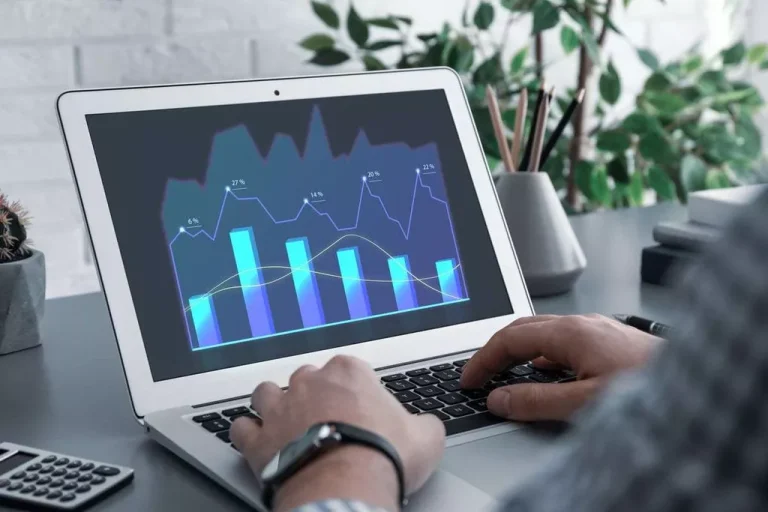Buy Side Liquidity And Sell Side Liquidity Explained
Content
Institutions often accumulate orders at critical price points, thereby manipulating the currency’s supply and demand and driving market prices. Their activity can lead to price slippage and impact the overall flow of the Forex markets, both on the buy and sell side. Hypothetical performance results have many inherent limitations, some of which are described below. One of the limitations of hypothetical performance results is that they are generally prepared with the benefit of hindsight. In addition, hypothetical trading does not involve buy side liquidity vs sell side liquidity financial risk, and no hypothetical trading record can completely account for the impact of financial risk of actual trading.
Trading Journal. Episode One . Some of the trading terminologies for Price Action.
Liquidity in the Forex market serves https://www.xcritical.com/ as the bedrock upon which price movements and trading strategies are based. Different types of liquidity play distinct roles, influencing how trades are executed and trends are established. A nuanced understanding of these differences is crucial for traders aiming to navigate the intricacies of Forex markets effectively.
Buy Side Liquidity And Sell Side Liquidity – Explained
- We then analyze whether the differences between firm-level determinants of bid- and ask-side liquidity can also be found at the market level.
- There is a wide range of careers available on the sell side, with more entry-level opportunities than there are typically available on the buy-side.
- On the Sell Side of the capital markets, we have professionals who represent corporations that need to raise money by SELLING securities (hence the name “Sell Side”).
- Sell-Side firms have far more opportunities for aspiring analysts than Buy-Side firms usually have, largely due to the sales nature of their business.
- 32.Propulsion Block (PB)A Propulsion Block is a price level that propels the market in a particular direction, often leading to significant price movements.
- 30.Price Action (PA)Price Action refers to the movement of the market price over time, analyzed without indicators.
In contrast, less liquid securities, such as small-cap stocks or emerging market bonds, tend to have shallow markets with lower levels of liquidity provision. This can make it more difficult to trade Cryptocurrency these securities and increase the risk of large price movements. Experienced market participants, including institutional investors, may strategically adjust prices to access liquidity when necessary.
What do financial experts use to accomplish this?

Monitoring sell side and buy side liquidity levels is crucial for predicting market shifts. ICT traders monitor the market sessions and look for specific times when trading volume is high enough to move prices quickly. This time is known as the “killzone,” and it’s where traders like to place their buy or sell orders.
It measures the extent to which the actual trade price aligns with the expected price, despite the size of the order. The information on market-bulls.com is provided for general information purposes only. Market-bulls.com does not accept responsibility for any loss or damage arising from reliance on the site's content.
28.Orderblock (OB)An Orderblock is a consolidation area where significant buy or sell orders are placed, often acting as support or resistance. 18.Low Resistance Liquidity Run (LRLR)LRLR indicates a market movement towards areas with low resistance, seeking liquidity. These movements are often less impeded and can result in sharp price changes.
Liquidity pools in Forex trading refer to areas within the market that hold substantial order volumes. These concentrations of open trades, when activated, can lead to significant price movements, both advantageous and perilous for traders. Swift engagements with liquidity pools might trigger immediate price slippage, hence altering trade outcomes. The Forex landscape is continually shaped by the entities that drive the market’s liquidity. Market liquidity is the cornerstone of the Forex market, reflecting the facility with which traders can purchase or sell positions without causing a significant impact on price stability. Though the concepts might be a bit foreign to traders who are used to a more traditional technical analysis approach, there is a reason that the ICT methodology has become so popular.
The price will always seek liquidity to either reverse or continue in the current move. Unlike other trading systems or software, ICT is not a one-size-fits-all approach. It is a collection of techniques, models and ideas that can be applied to different market situations and trading styles. Thus, it is a versatile strategy that can be adapted to a certain situation in the market. This article will delve into these concepts and explore how they can be applied in trading.
Buy-side liquidity represents a level on the chart where short sellers will have their stops positioned. Sell-side liquidity represents a level on the chart where long-buyers will place their stops. These levels are found in areas where traders are "proven wrong" and, therefore, want to get out of their trades.
Central banks, like India’s RBI, use various methods to ensure sufficient money availability, particularly during times of crisis. Join useThinkScript to post your question to a community of 21,000+ developers and traders. If you’d like to learn more about these concepts, take some time to watch the below video that we put together with our friend, Trade For Opportunity. In the video, he highlights all of the concepts discussed above, as well as shows examples of each concept occurring on the chart.

Identify and assess contra-liquidity in the Liquidity Cloud® to know when to trade—all while reducing information leakage. Liquidity’s abundance or scarcity can yield both positive and negative outcomes. See our Terms of Service and Customer Contract and Market Data Disclaimers for additional disclaimers.
"You can't try to do 2,000 shares every five minutes with a market maker — they won't be very happy." ITG is developing smart routing capabilities of its own, according to Harrison. Their order flow is not always welcomed by market makers as it is usually "informed" and can arrive in rapid-fire fashion. They like using alternative trading systems such as ECNs which don't basically care where the trades come from. Quant shop CooperNeff, for example, became an early devotee of the Archipelago ECN when Nasdaq market makers rejected its trades. Keith Brickman, head Nasdaq trader at Morgan Stanley, does not consider Nasdaq fragmented as much ECN volume consists of inter-dealer trading.
Receive real-time, actionable alerts on your trading opportunities with insight on contra price and size. Understand pre-trade liquidity and receive alerts when trading opportunities arise across the network. Forex trading involves significant risk of loss and is not suitable for all investors.
However, like any strategy, there is always a risk involved, and profits cannot be guaranteed. Traders can also use other technical indicators, such as trend lines and moving averages, to confirm potential reversal points further. A sell-side analyst is an analyst who works in investment banking, equity research, commercial banking, corporate banking, or sales and trading. It’s generally safe to assume that you can make more on the buy side, but don’t underestimate the ability of a rainmaker investment banker on the sell-side to earn massive amounts of money.
Buy side liquidity forex refers to the presence of buy orders, particularly above market price ranges or highs, that are awaiting execution. This includes orders like sell stop losses and buy stop limit orders, which play a significant role in the dynamics of institutional trading and overall market mechanics. At the heart of market mechanics, structural liquidity refers to layers of buy and sell stop losses situated at crucial market junctures—trend breaks or structural levels. These liquidity layers are more than mere markers; they hold the potential to act as catalysts, precipitating significant price changes as they are targeted by banking and financial institutions (BFIs).

